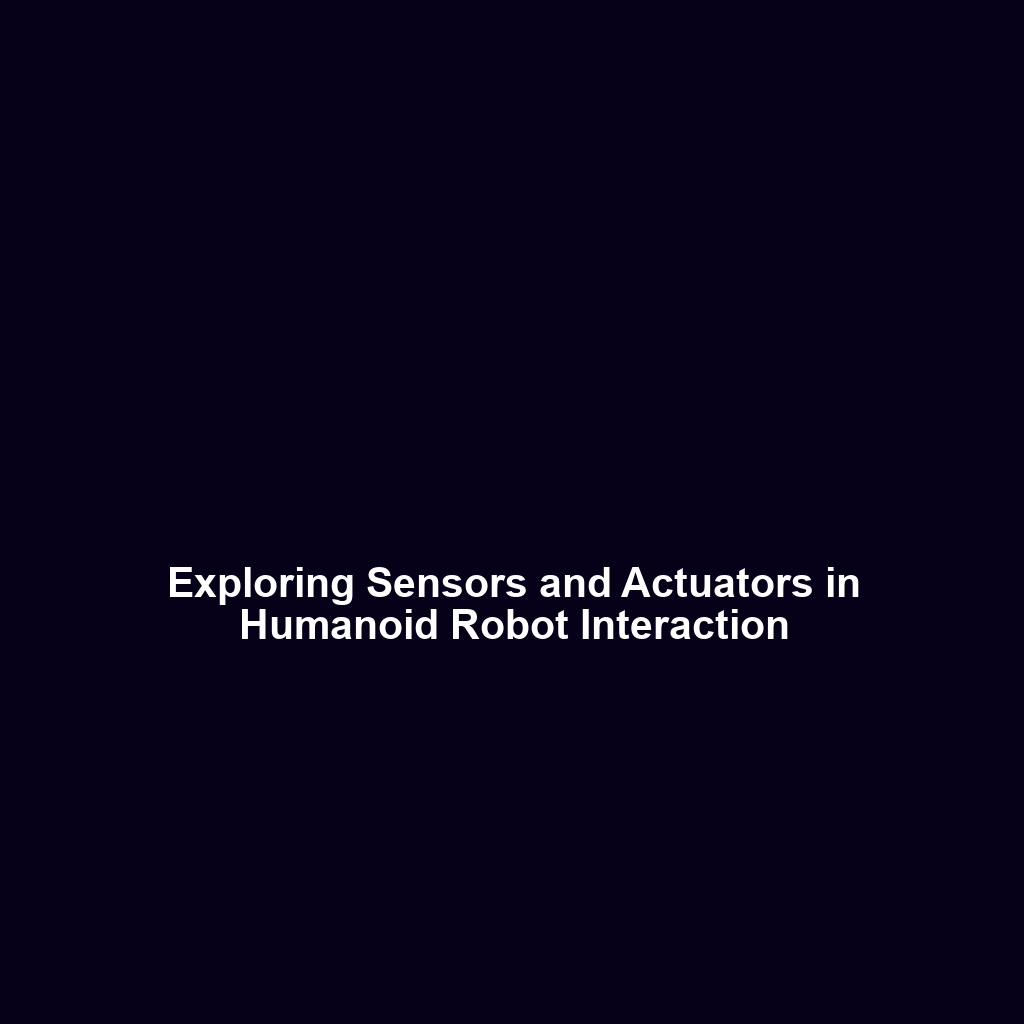The Role of Natural Language Processing (NLP) in Enabling Humanoid Robots to Understand and Respond to Human Speech
Introduction
Natural Language Processing (NLP) is a pivotal technology that empowers humanoid robots to comprehend and engage with human speech effectively. As humanoid robots become increasingly integrated into everyday life, the ability to interact using natural language is vital for user acceptance and functionality. This article delves into how NLP technology facilitates communication between humans and humanoid robots, emphasizing its significance in the ever-evolving field of robotics.
Key Concepts of Natural Language Processing
NLP encompasses a range of concepts that are essential for enabling humanoid robots to understand and respond to human interactions. Key principles include:
- Speech Recognition: The ability of robots to convert spoken language into text format.
- Natural Language Understanding (NLU): Processing and interpreting the intent behind spoken words.
- Natural Language Generation (NLG): Producing coherent human-like responses based on the interpreted input.
Together, these components create a robust framework that allows humanoid robots to engage in meaningful conversations, thus enhancing their usability in various contexts.
Applications and Real-World Uses
The integration of NLP into humanoid robots has led to numerous practical applications, transforming various sectors. Here are some significant uses:
- Customer Service: Humanoid robots employed in retail settings provide support by answering inquiries and helping customers navigate issues.
- Healthcare Assistants: Robots that use NLP can communicate with patients, offering reminders for medication and explaining procedures.
- Educational Tools: Robots equipped with NLP capabilities serve as interactive learning aids, answering students’ questions and facilitating discussions.
These applications clearly illustrate how NLP enhances humanoid robots’ effectiveness in real-world scenarios.
Current Challenges
Despite advancements in NLP, several challenges still hinder the full realization of humanoid robots’ potential. Some key issues include:
- Accent and Dialect Variability: Differences in speech can affect recognition accuracy.
- Contextual Understanding: Robots can struggle to interpret nuanced conversations or ambiguous phrases.
- Emotional Intelligence: Lack of empathetic responses in critical interactions.
Addressing these challenges is crucial for improving the reliability and acceptance of humanoid robots in society.
Future Research and Innovations
The future of NLP in humanoid robots looks promising, with ongoing research aimed at overcoming current limitations. Expected innovations include:
- Enhanced Machine Learning Algorithms: Utilizing more sophisticated algorithms to improve language processing capabilities.
- Integration of Emotional Recognition Technology: Allowing robots to interpret and respond to emotional cues in conversation.
- Personalization Features: Enabling robots to adapt their communication style based on individual user preferences.
These advancements are poised to revolutionize how humanoid robots function and interact with humans, making them more intuitive and responsive.
Conclusion
Natural Language Processing plays a critical role in enabling humanoid robots to understand and respond to human speech, bridging the gap between humans and machines. The applications of NLP in humanoid robots are wide-ranging and impactful, although challenges remain that require ongoing research and innovation. As technology progresses, the capabilities of humanoid robots will continue to evolve, promising a future where human-robot interaction becomes seamless. To stay informed on advancements in robotics and NLP, follow our regularly updated content on related topics.









